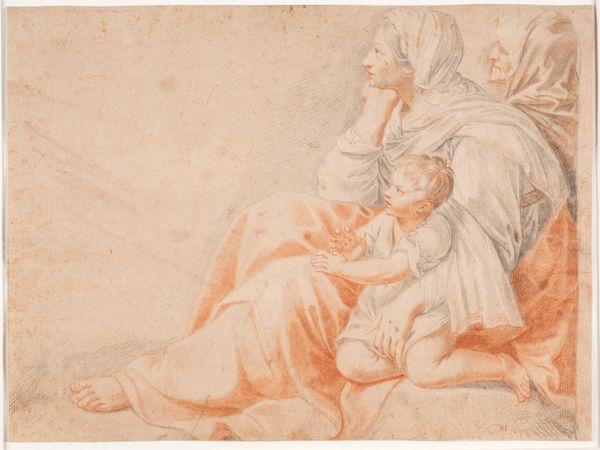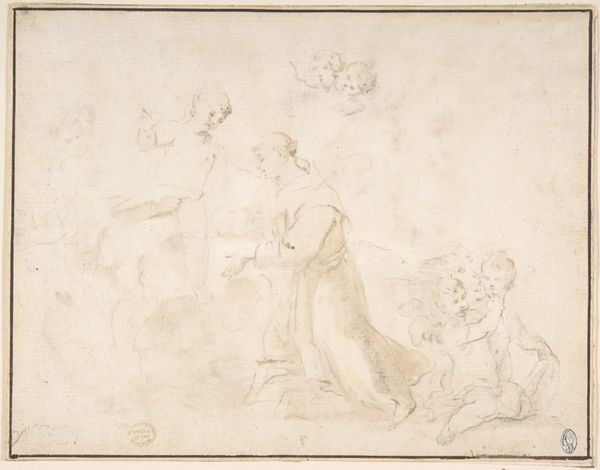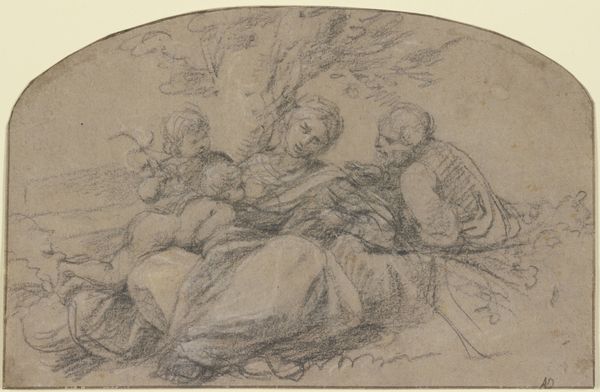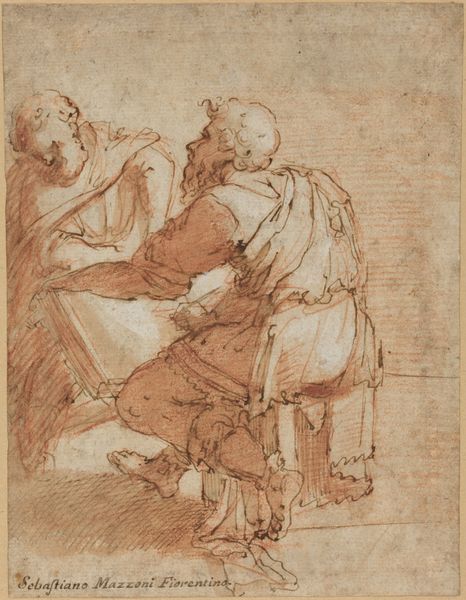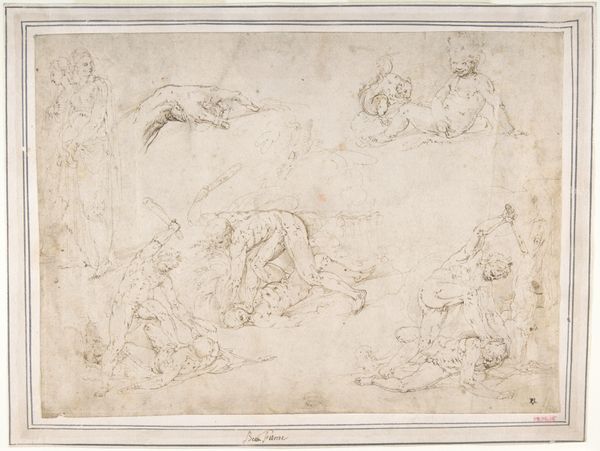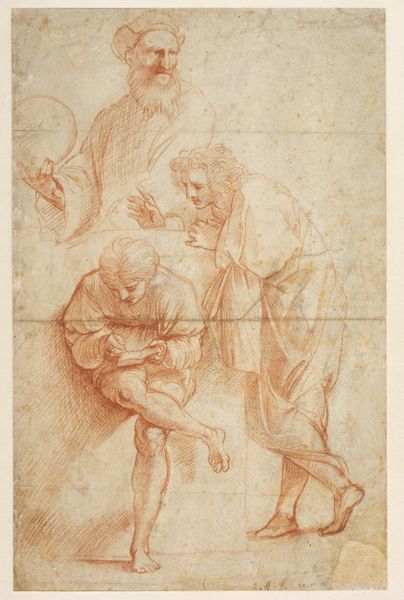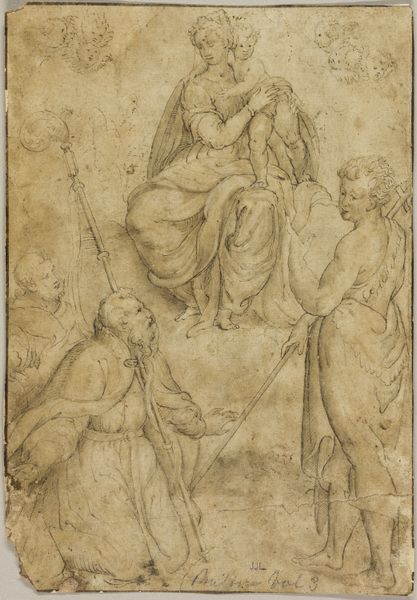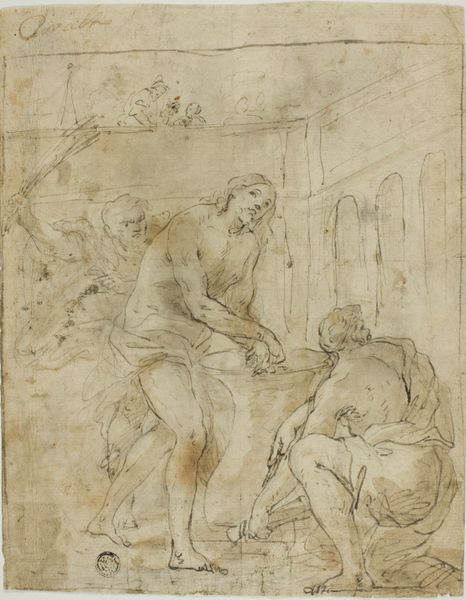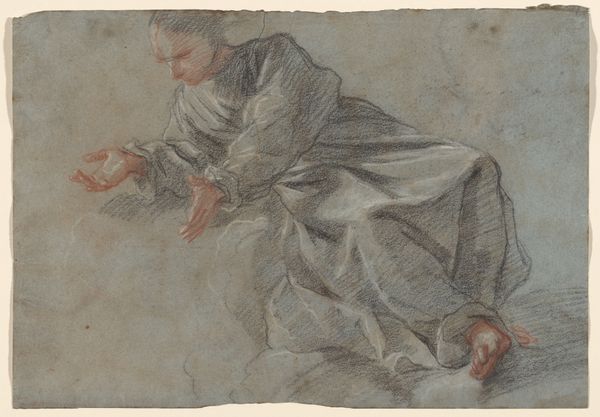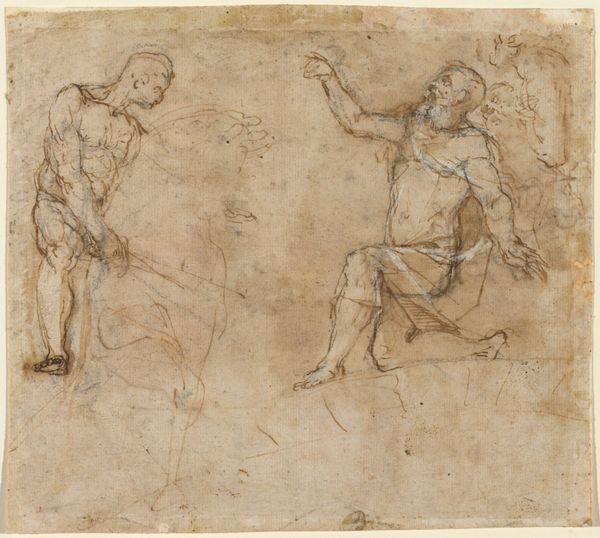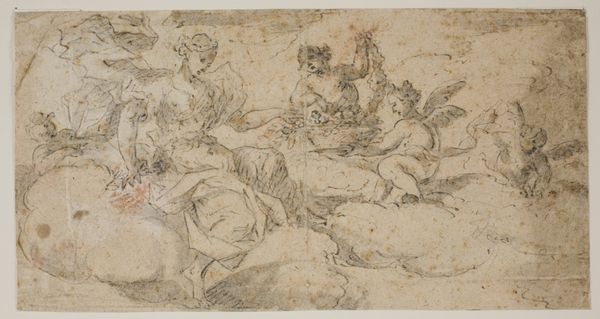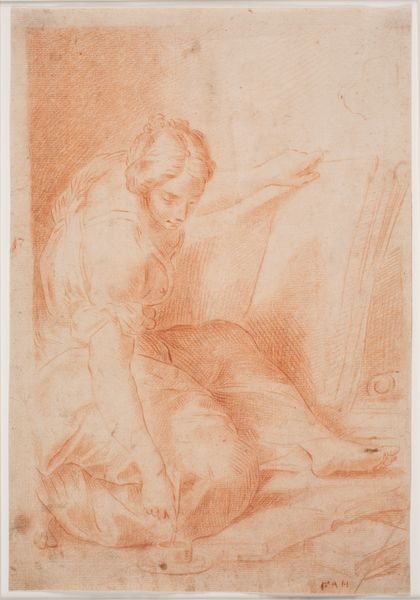
Two studies of a seated man and one study of his folded hands 1599 - 1661
0:00
0:00
drawing, pen, charcoal
#
portrait
#
drawing
#
charcoal drawing
#
figuration
#
pen
#
charcoal
#
italian-renaissance
Dimensions: 281 mm (height) x 366 mm (width) (bladmaal)
Editor: Here we have Andrea Sacchi's "Two studies of a seated man and one study of his folded hands," created sometime between 1599 and 1661. It’s a drawing, combining pen and charcoal on paper, currently held at the SMK in Copenhagen. I'm struck by the red chalk; it gives the piece a warmth, even though the subject seems rather introspective. What strikes you most about this drawing? Curator: It's fascinating to consider the economic context of Sacchi's studio and the materials used here. The red chalk itself, its pigment sourced from specific geological locations, dictated a certain cost. Were these high-grade materials signaling a study for a prominent commission, therefore reflecting a status symbol of his workshop? I would examine the sourcing of the paper – Italian paper production had specific centers known for particular qualities. These elements determined the overall expenditure involved in the creation of this piece. The use of both pen and charcoal: was that division of labor? Editor: That's an interesting point! I hadn't considered the division of labour, I automatically see 'Renaissance' and think everything is touched by the Master, but if multiple people had their hands on it... that changes things. Curator: Absolutely. Furthermore, the scale hints to me if it was indeed a full study, an exercise for students, a more independent work? We see the artistic processes that shaped the image - an interaction of human skill, cost, and the available materials. This, as I suggest, ultimately would have directed both the execution and consumption of art in Sacchi's workshop, making it crucial to its place within the artistic market and culture of the time. Editor: So, you're saying by focusing on the physical aspects – the materials, the workshop dynamics – we can uncover deeper meanings about its role in the broader social and economic landscape. Curator: Precisely. It's about challenging this mythologising idea and remembering the very concrete realities and means through which Sacchi's art was not only produced but also understood. Editor: I see it differently now, thanks.
Comments
No comments
Be the first to comment and join the conversation on the ultimate creative platform.
